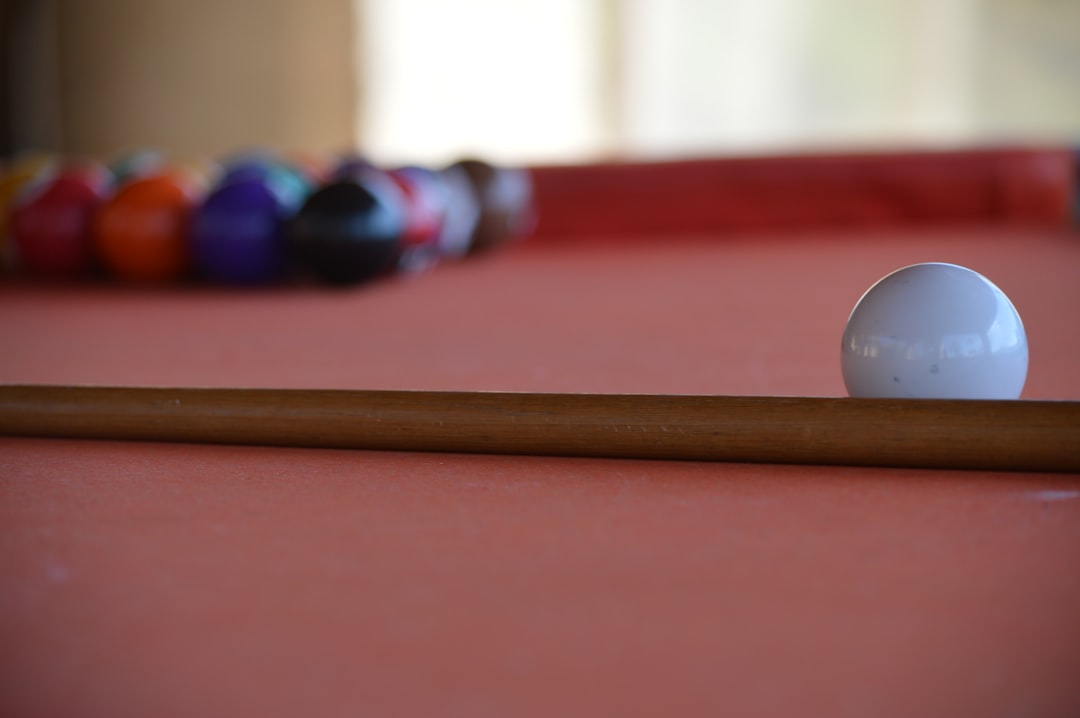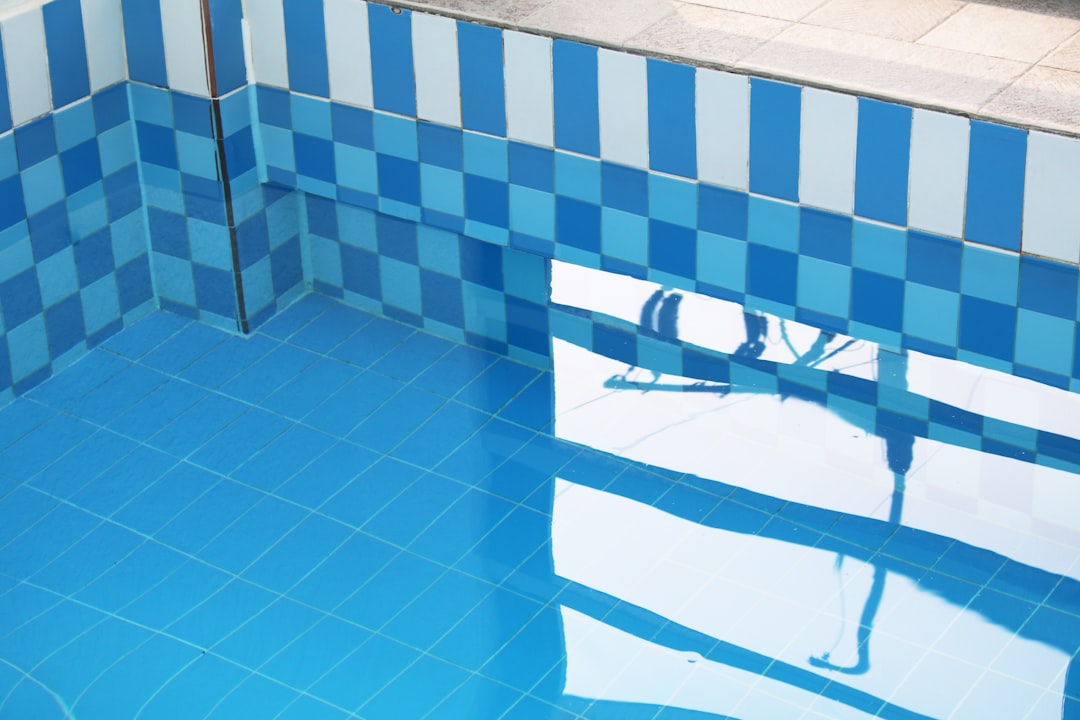

Engage prospects with a scan and streamline customer engagement with FREE QR code marketing tools by Sona – no strings attached!
Create a Free QR CodeFree consultation

No commitment

Engage prospects with a scan and streamline customer engagement with FREE QR code marketing tools by Sona – no strings attached!
Create a Free QR CodeFree consultation

No commitment
QR codes have evolved from novelty to strategic powerhouse, bridging offline engagement with online action. For pool table repair services, QR codes offer a fun, frictionless, and effective way to boost lead generation, appointment bookings, and customer engagement, which is crucial in an industry where tracking individual prospects and measuring outreach impact are ongoing challenges.
As demand grows for reliable pool table restoration, maintenance, and repair, businesses struggle with tracking service effectiveness, reaching new clients, and simplifying the customer journey. Printed forms and static brochures rarely capture actionable data, leading to missed opportunities and lost service requests. QR codes overcome these hurdles by streamlining the path from interest to action, making it easier to book services, provide real-time updates, and track engagement signals that were previously invisible.
This guide explains how QR codes can drive new business, optimize service delivery, and build actionable data pipelines for better marketing. Learn how pool table repair providers can transform everyday offline interactions into opportunities for revenue growth and stronger customer relationships.

QR codes bridge the gap between physical touchpoints and digital outcomes. In a pool table repair business, many high-intent moments happen offline: a homeowner sees your van on the street, a pool hall manager notices your flyer, or a customer picks up a set of felt-cleaning wipes at checkout. Without a clear digital onramp, these moments fade. QR codes capture these interactions instantly, pushing prospects toward bookings, quote requests, and ongoing service subscriptions while feeding your CRM with clean, structured data.
Replacing analog processes is a fast route to results. Consider the old way: paper estimate forms that get misplaced, business cards that never make it to a phone contact list, and brochures that direct people to a generic homepage rather than a purpose-built lead form. QR codes streamline each of these. Prospects scan a code and land on a pre-filled quote request, a self-serve booking calendar, or a video guide that ends with a clear call to schedule service. The result is a shorter path to conversion, richer data capture, and a noticeable lift in service throughput.
This guide is for owners, operations leaders, and marketers who want to modernize workflows, improve response times, and quantify the return on traditional outreach. A QR-enabled service operation captures more demand at the source, simplifies scheduling, and makes customer follow-up automatic rather than manual.
And yes, Sona QR is designed to support each stage of that transformation. Generate dynamic codes, centralize analytics, sync with your CRM, and iterate quickly without reprinting assets. The combination of practical deployment and measurable feedback is what turns QR codes from a gimmick into a growth engine. Start creating QR codes for free.

Pool table repair businesses face a distinct set of challenges: prospects often evaluate providers based on proximity and responsiveness, most discovery happens offline, and many service requests are time-sensitive. Yet paper-first outreach creates friction. A pool hall operator who sees your poster may not type a URL or save your number. A homeowner who finds your business card during a spring clean might delay calling and never circle back. QR codes eliminate the gap between interest and action, especially where seconds count.
QR codes also unlock dynamic content strategy. Printed materials are typically static, so promotions, availability, or service menus age quickly. Dynamic QR codes let you update destinations in real time, which means your felt-special pricing, seasonal tune-up bundles, and scheduling availability remain accurate without reprinting. That reduction in waste pairs with better tracking to create a continuous improvement loop.
In short, QR codes align with the realities of your field: hands-on work, busy schedules, and lots of physical touchpoints. They capture demand at the exact moment someone thinks I need this table leveled or our felt needs replacing, then convert that thought into an action you can measure.

Pool table repair involves multiple moments where the right QR format matters: discovery, booking, service day coordination, and follow-up. Choosing the right format ensures a smooth, predictable experience for each audience.
In practice, most shops will use a mix of formats. Web links handle the majority of booking and education flows. vCards ensure that your details do not get lost. SMS or email links make it easier for prospects who prefer to initiate a conversation without completing a form. Wi-Fi codes can elevate the in-shop experience, especially if you offer demos or product content. App download links are useful if you offer a customer portal or maintenance tracker, though many providers can start with the basics and scale over time.
With Sona QR, you can generate each format, assign UTM parameters, and manage them from one dashboard. Use dynamic codes for campaigns that require updates or measurement, and reserve static codes for permanent, simple destinations like a phone number or Google Business profile.

Your most valuable growth opportunities are already hiding in plain sight. You likely print invoices, drive branded vehicles, visit local venues, and ship accessories or parts. Each of these surfaces can become a digital onramp that speeds up sales and boosts loyalty.
Think in terms of intent clusters. Someone scanning a code on your van is in discovery mode. A person scanning an invoice QR is already a customer, which makes them a likely candidate for maintenance plans or add-ons. By deploying unique codes for each surface, you can match offers to intent and attribute results by placement.
Syncing scan-level data to your CRM lets you build segments by placement, timing, and intent. Over time, you will see which touchpoints generate high-value jobs, then focus your budget and field strategy accordingly.
Pool table repair workflows lend themselves to QR-driven moments that convert. The key is to pair each use case with a destination that delivers exactly what the scanner expects: a quote, a booking, a tutorial, or a fast way to get help.
When you structure your deployments this way, you create a coherent buyer journey. Awareness touchpoints capture interest at scale, consideration touchpoints educate and pre-qualify, and conversion touchpoints make scheduling and payment seamless. Post-service touchpoints bring customers back for maintenance and refer-a-friend programs.
These three use cases deliver sustainable lift across the funnel. Estimate QR codes fuel the top of the funnel with qualified leads. Scheduling QR codes increase velocity and reduce operational overhead. Education QR codes convert owners into long-term clients by adding value between service events.
Every scan is a micro-declaration of interest. A bar owner who scans a van code at 2 a.m. likely needs urgent help. A homeowner who scans an invoice code is primed for ongoing care. A hobbyist who scans a packaging code to watch a tutorial may be ready for an upgrade. By assigning unique QR codes to each context, you can segment audiences automatically and nurture them with messages that feel personal. For retargeting tactics, see Sona’s Playbook titled Intent-Driven Retargeting.
Start by defining segments you can act on. For most pool table repair providers, common distinctions include homeowner vs. commercial, new lead vs. existing client, and repair vs. moving services. Then extend with timing and location context: late-night scans from bars, weekend scans from homeowners, or scans near event venues.
For pool table repair services, useful audience distinctions include homeowners seeking re-felting vs. bar managers scheduling emergency re-leveling, new table owners needing setup vs. long-time owners considering cushion replacement, and local league operators planning seasonal maintenance. Each group deserves a tailored journey that acknowledges their needs and timeline.
QR codes sit at the center of a connected marketing plan. They transform static print media into interactive pathways, complement digital channels with measurable offline triggers, and simplify how prospects move from curiosity to commitment. Instead of guessing which flyer or postcard worked, you will know, and you can double down with confidence. For measurement strategy, see Sona’s blog post titled The Importance of Accurate Revenue Attribution.
In pool table repair, the most common media include direct mail to neighborhoods, brochures in partner retail stores, vehicle signage, in-shop posters, and sponsorships at pool leagues or bars. Layer QR codes across these channels and sync scan data to your attribution stack. Your offline work will start to look like digital performance marketing, complete with cohorts, conversion rates, and revenue per asset.
With a centralized platform like Sona QR, you can manage all codes, monitor performance, and sync scan data with your CRM and ad platforms. That single source of truth helps you move budget toward the channels and messages that actually drive booked jobs.
Running a high-performing QR program requires clarity, consistency, and testing. Teams that plan around specific outcomes get better results than those who print one code and hope for the best. Start with one or two priority use cases, build clean journeys, and expand after you see what works.
Before you begin, decide which tools will power the experience. A dynamic QR platform like Sona QR simplifies management, while a scheduling tool, a short estimate form, and your CRM handle the rest. Keep the destinations fast on mobile, use plain language, and show the value of scanning right next to the code.
Counting scans is not enough. What matters is how many scans translate into booked jobs, repeat maintenance, and referrals. Without connecting QR activity to downstream actions in your CRM and scheduling systems, you will not know which codes earn their keep. A robust analytics setup closes that loop, from first scan to closed won. For deeper strategy on offline measurement, see Sona’s blog post titled The Essential Guide to Offline Attribution.
Sona QR and Sona.com help pool table repair teams go beyond vanity metrics. You can capture who scanned, where, and when; see which placements convert; and tie those interactions to real people and revenue. That visibility lets you scale what is working and cut what is not, which is the core of performance marketing.
Set baseline metrics such as scan-to-lead conversion, scan-to-booking rate, average revenue per scan, and cost per scan by channel. Update them monthly. Over time, you will build a reliable model for forecasting how many scans and placements you need to hit revenue targets.
Once your foundational use cases are running, small improvements compound results. Focus on clarity, relevance, and automation. The more your QR journeys feel like helpful shortcuts, the more customers will use them.
Pick tactics that fit your common surfaces and buyer journeys. For pool table repair providers, invoices, vehicle wraps, and partner displays are table stakes, and they pair well with targeted retargeting and automated follow-up.
Creative deployments can make a difference. Try a waterproof QR sticker under the pool table rails that says Scan for a free care guide. Or include a small QR card with every chalk set that says Scan to match felt colors and see our premium felts. These low-cost touches can turn accessories into ongoing engagement engines. Explore QR placements with stickers and labels.

QR code programs thrive when they are embedded in real workflows. The most compelling examples combine thoughtful placement with an immediate benefit, then close the loop with data and follow-up. Here are practical concepts that pool table repair providers have used to drive measurable outcomes.
Uniform placements and partner network tactics are often underutilized. Technicians are your frontline ambassadors, and partner stores see your ideal buyer every day. With the right QR-driven pitches and incentives, these touchpoints can fuel steady growth.
These examples show how common friction points become new pipelines. Missed leads transform into booked jobs, lost feedback becomes a service-quality signal, and unmeasured outreach turns into attributable revenue.
Experience shows that small execution details determine whether a QR program stalls or scales. The right call to action, the right code size, and the right landing-page copy can lift scan rates and conversions significantly. Conversely, poor placement or stale destinations can undermine trust and performance.
Avoid common mistakes like hiding codes in low-contrast designs, placing them too high or too low for easy scanning, or sending users to a generic homepage with no clear next step. A code must feel obvious and rewarding. If the promise is unclear or the destination does not fulfill it, customers will not scan again.
QR codes are more than a shortcut. They are a strategic solution to core challenges in pool table repair. Embedding digital engagement at every touchpoint helps providers capture and nurture high-value prospects, eliminate missed opportunities, and turn fleeting interest into measurable results. The advantages are clear: immediate engagement across flyers, vehicles, invoices, and packaging; a connected journey from offline encounter to online booking; and actionable intelligence that sharpens marketing and operations. When providers adopt modern QR solutions, every touchpoint becomes a growth driver and every scan delivers insight. In a field where missed leads and incomplete data equal lost revenue, the ability to track, attribute, and act on engagement sets a new standard for success.
QR codes have transformed pool table repair services from a traditional, appointment-driven business into a dynamic, customer-focused growth channel. Whether it’s streamlining service scheduling, providing instant access to maintenance tutorials, or delivering real-time repair updates, QR codes replace slow, manual communication with fast, mobile-friendly actions that enhance customer satisfaction and operational efficiency. Imagine your clients effortlessly scanning a code to book repairs, access troubleshooting guides, or receive personalized offers—all while you track engagement and optimize your service offerings.
With Sona QR, you can create dynamic, trackable QR codes in seconds, update campaigns instantly without reprinting, and link every scan directly to revenue and customer data. No missed leads, no guesswork—just smarter, more profitable service interactions that set your business apart. Start for free with Sona QR today and turn every scan into a loyal customer, a completed repair, or a glowing referral.
Look for providers who use modern tools like QR codes for easy booking, real-time updates, and clear tracking, which indicate professionalism and responsiveness.
Common repair needs include felt replacement, re-cushioning, slate seam repair, re-leveling, and moving or setup services.
Costs vary depending on the service such as felt replacement or leveling; using QR-enabled estimate calculators can provide quick, accurate quotes tailored to your table.
Signs include uneven leveling, damaged or worn felt, poor cushion rebound, visible slate seam issues, or when DIY maintenance tips no longer resolve problems.
Regular maintenance includes following care guides accessed via QR codes on accessory packaging, scheduling tune-ups, cleaning the felt properly, and addressing minor issues promptly.
Hire professionals who offer moving and setup services, which can be booked easily via QR codes on invoices or service materials to ensure proper disassembly and reassembly.
Felt should be replaced if it shows significant wear, tears, or affects gameplay; QR codes on felt packaging often link to video guides helping identify replacement needs.
Leveling frequency depends on usage and environment, but regular checks and scheduling re-leveling services via QR-enabled booking systems help maintain optimal play.
DIY tips include cleaning felt with recommended products, minor cushion adjustments, and using QR code-linked tutorials for maintenance schedules and care instructions.
Use Sona QR's trackable codes to improve customer acquisition and engagement today.
Create Your FREE Trackable QR Code in SecondsJoin results-focused teams combining Sona Platform automation with advanced Google Ads strategies to scale lead generation

Connect your existing CRM

Free Account Enrichment

No setup fees
No commitment required

Free consultation

Get a custom Google Ads roadmap for your business






Launch campaigns that generate qualified leads in 30 days or less.
